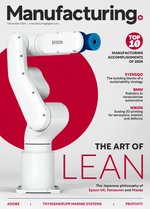P2i: electronics expected to fail without liquid protection

Surveying research and design professionals at electric device manufacturers, P2i - a liquid protection solutions provider - has released its latest white paper on ‘Electronic Product Design’.
“We are increasingly seeing manufacturers require a number of different levels of liquid protection, from splash resistance to fully submersible devices, with no one size fits all. Liquid protection is essential for products being fit for purpose, with nearly a fifth (19 per cent) of our survey respondents believing their product would fail in the first three months without it and half (50 per cent) expecting the device to fail within six months,” commented Simon Vogt, Chief Commercial Officer at P2i.
Key findings from the white paper study
- 83 per cent of manufacturers would expect their products to fail within a year without liquid protection, with accidental submersion and spills being the two biggest risks
- 32 per cent of manufacturers state that protecting products from liquid damage improves the user experience, while 33 per cent said it is an important feature when marketing the final product
- 27 per cent of companies solely rely on nano-coating solutions to protect their products, while 61 per cent use some for of nano-coating
- 96 per cent of manufacturers typically offer some level of warranty against liquid damage when a liquid protection solution is used
- The top two advantage of nano-coating for liquid protection compared to mechanical solutions included longer lasting protection (53 per cent), and easier implementation in the design process (41 per cent)
“Nanocoating solutions provide tremendous value for manufacturers in several areas compared to other solutions. The initial investment significantly extends the product’s life to keep it in use by the customer for longer, providing cost savings from fewer returns as well as acting to strengthen the brand image. Users of electronic devices and products associate high quality with a longer lifespan and are highly disappointed if they fail to work as expected. This reflects badly on the manufacturer, so protecting the device also acts to protect the brand,” added Vogt.
For more information on manufacturing topics - please take a look at the latest edition of Manufacturing Global.
- Executive Outlook in the Face of Economic UncertaintyProcurement & Supply Chain
- A microchip timeline from 1959 to the supply chain shortageProcurement & Supply Chain
- NSIG & Okmetic to build silicon wafer manufacturing plantTechnology
- Top 10 manufactures in Dubai, from drinks to electronicsTechnology

